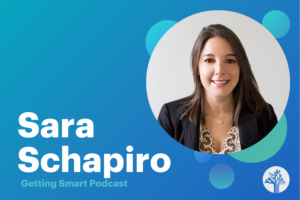Four Keys to Success at the Most Innovative Schools in the World

Recent visits to renowned centers of innovation such as AltSchool in San Francisco and the Dalton Academy in Beijing have got me thinking about what it means to wear the label “one of the most innovative schools in the world.”
There are many such lists, so I spent a day reviewing all that I could find. I built a spreadsheet to capture the adjectives used to describe the innovations present in these schools and then mapped them into broader categories.
Here’s what I learned:
Use of space
Innovative schools such as Ørestad Gymnasium in Denmark and the Green School in Bali adopt a flexible attitude toward walls, classrooms, open areas, community and workspaces. There is a heavy focus on the implementation of sustainable practices in construction, design and use.
Pedagogy
Invariably, students in such organizations as the Kosen Network in Japan and Blue School in New York engage in project-based learning. The projects vary in duration, from one-day engagements to the long-form expeditions favored by schools that adopt the Expeditionary Learning model. Instruction in innovative schools is described as student-directed or personalized, often using technology to accomplish that goal. Accordingly, it is quite common to see flipped or blended strategies.
Grouping structures
The composition of learning cohorts is a fascinating feature of innovative schools. At Digital Study Hall in India, there aren’t enough teachers to support the large number of learners so the organization records teachers’ lectures and sends DVDs of the recordings to poor and rural areas for mass consumption. At Brightworks School in San Francisco, the teachers personalize learning by using a mixed-aged approach that tries to break down the walls between school and community.
Authenticity
There is a continuum of authenticity in place here, but schools such as the Met in Providence, Rhode Island and Sra Pou Vocational School in Cambodia require students to interact with the community or local businesses via apprenticeships, internships, service learning, or projects that have an action component. In fact, Sra Pou brings the local economy into the school itself, providing training for all members of the family.
This list is not comprehensive. We can all think of other innovative schools in the U.S., such as High Tech High in San Diego or P-Tech in New York, that are inspired by these same features of innovation or take the work in a new direction. The rest of the world has its exemplars, too, notably the Steve Jobs School in Amsterdam and the Innova Schools network in Peru.
But is what they are doing new or innovative?
I needed a little perspective so I went back to examine the policy, funding and implementation in support of the experiment that was the New American Schools program authorized by President George H. Bush in 1991.
Here are some the innovative strategies that the 11 grantees experimented with in that decade:
Pedagogy: Project-based learning, inquiry, curricular themes, teachers as curriculum designers, interdisciplinary units, tech integration, integration of skills and knowledge, tutoring and student choice.
Grouping structures: Elimination of tracking, homogeneous and heterogeneous grouping, small-group instruction, block scheduling, looping, multi-age cohorts, flexible scheduling and reduced class and/or school size.
Governance: School-level leadership teams, student advisory teams and committees, appropriate autonomy, parental choice, budgetary control, teacher team meetings, parent teams, integration with social services at the community level, community audits and surveys and peer review.
Assessment: Performance tasks, elimination of standardized tests, portfolios, public presentations and multiple assessments.
Meet the new innovation, same as the old innovation.
Is there is a well-defined path away from the industrial-model school to the innovative schools of the future we all crave? It seems to look like this: From rigid use of space and traditional instruction to experimentation with inquiry-based learning and tech integration and from there to personalized and competency-based models in flexible space and flexible time in multi-age cohorts that place students in the real world for all or part of their day.
Innovation for innovation’s sake, and certainly innovation that ignores the past, is not going to elevate education. Innovation must have a purpose and that purpose is mostly governed by what each neighborhood, city, state and country view is the outcome of education.
Some schools seek success on college entrance exams. Some schools seek to increase attendance or diminish bullying and provide an equitable education for all learners. Some schools focus on instilling a set of values that cherish the local or global community, the environment and service learning. And some schools try to develop the skills needed for success in college, career and citizenship.
What decisions will help create the most innovative schools, even if those innovations have the distinct flavor of their locale or borrow heavily from the past? I take inspiration from the model of Dalton Academy in Beijing, which has received tacit government approval to establish a renegade position as a paradigm-breaking model for educational reform in China. I liken their approach to the way the developing world installed telecommunications. The U.S. and other developed economies had to build a vast infrastructure of landlines before migrating to mobile. The developing world skipped that stage and went straight to mobile.
Are there schools out their following a similar trajectory of innovation? Help me find them and celebrate their work.
David Ross is a global educational consultant who works on large-scale implementations of project-based learning and 21st-century skills programs in the U.S. and abroad. He is the former CEO of the Partnership for 21st Century Learning as well as the former Senior Director for the Buck Institute for Education. You can follow him at @davidPBLross.
For more, see:
- 10 (Interpersonal) Traits of Innovative School Leaders
- The One Thing Innovative School Leaders Should Do Before School Starts
- League of Innovative Schools: A Network Creating the Future of Learning
Stay in-the-know with all things EdTech and innovations in learning by signing up to receive the weekly Smart Update.







Bruce Pinkston
Trying to download the iready app for my first grade grandsons